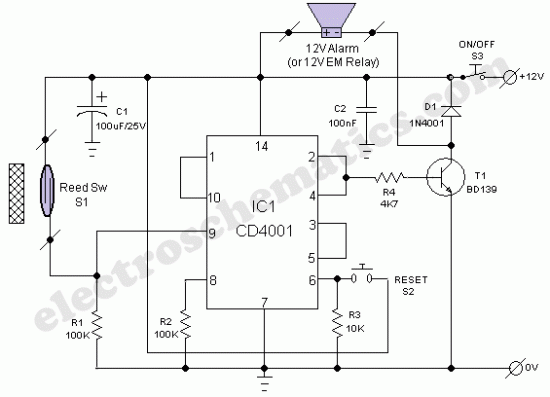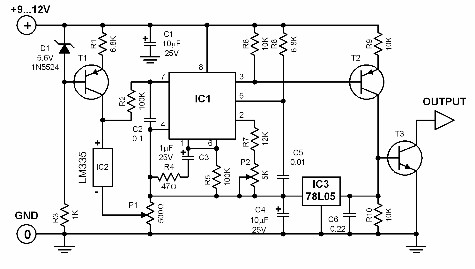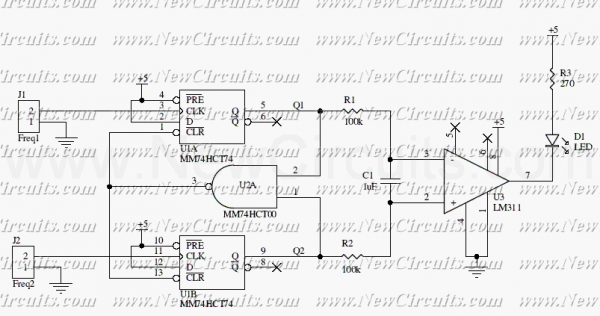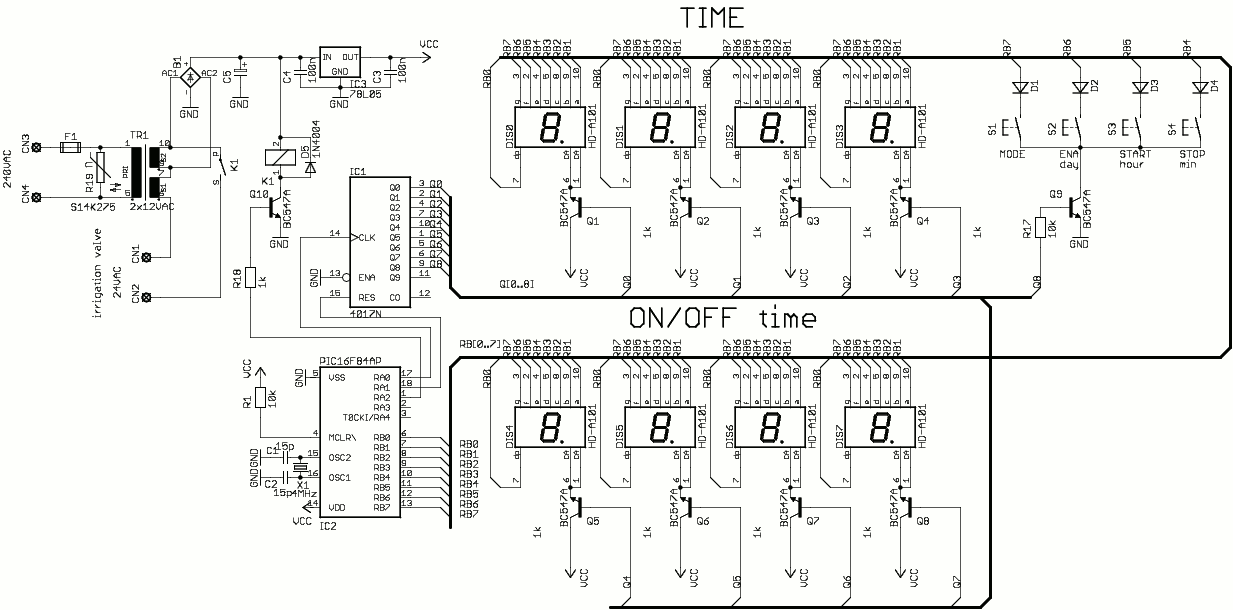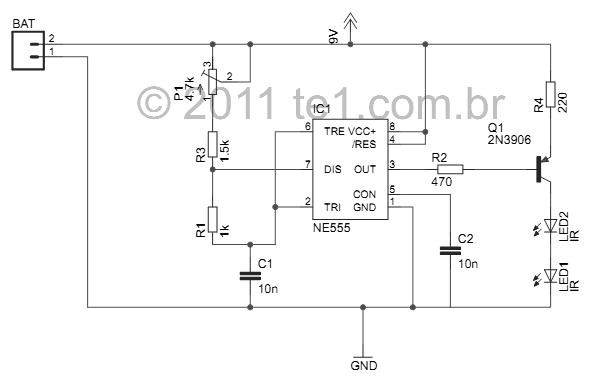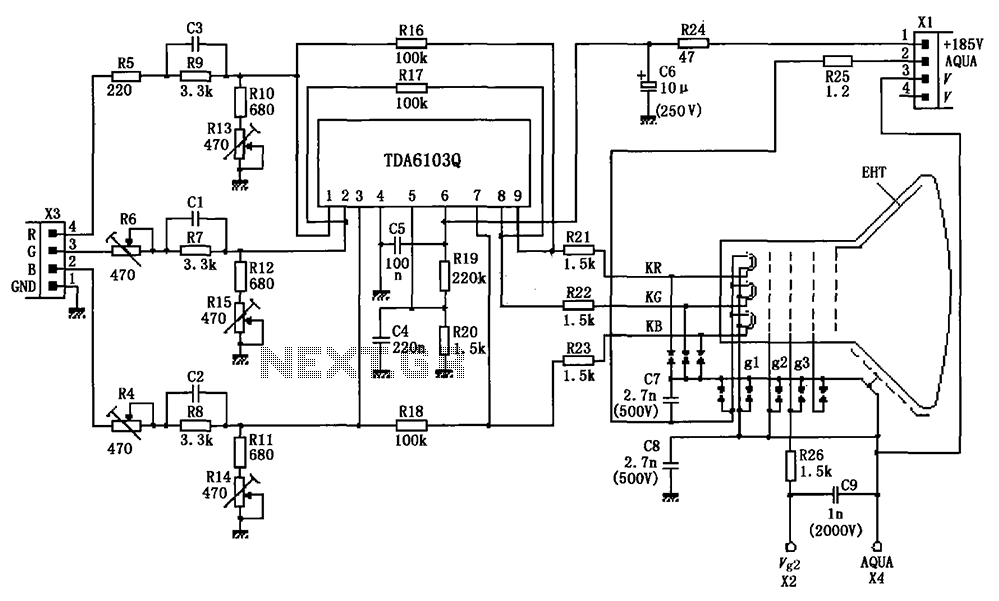
PIC Frequency Counter with Frequency Lock

This PIC software integrates frequency counter and frequency locking functions. By incorporating a couple of transistors and an operational amplifier (TL082), it is feasible to stabilize the LC oscillator frequency. The frequency reference is established from the measured frequency itself after a delay defined by parameter 0Dh, contingent on the number of consecutive samples (defined by 0Eh) of the measured frequency being within +/-20 Hz. The actual value is then triggered as the frequency reference until the software detects that the locking conditions are no longer valid. Frequency measurements occur every 100 ms. The actual frequency is subsequently subtracted from the reference frequency, and the difference is compared to zero to determine the deviation. A result of zero indicates no deviation, thus no need to fine-tune the oscillator frequency. A negative result indicates that the actual frequency is higher than the reference, which determines the direction for frequency correction. The rough value of the difference is calculated; if within 20 Hz, a short 2.4 ms pulse is controlled. If greater, a 100 ms pulse is controlled. Through these calculations, information is obtained on how to fine-tune the oscillator frequency to match the actual frequency with the frequency reference. The pulses are controlled through digital outputs RB0 or RB3 based on the sign of the frequency difference. The outputs are never activated simultaneously to avoid a short circuit. The controller employs the TL082 operational amplifier. The first amplifier operates as an integrator using capacitor C8 and resistor R23, resulting in a time constant of R23 * C8 = 22 M Ohms * 2.2 µF = 48 s, allowing for slow control to fine-tune the oscillator frequency, which is the purpose of the controller. The VFO must remain sufficiently stable. The second amplifier of the TL082 is configured as a buffer. If the PIC software sets output RB0 to TRUE, LED D4 illuminates, and Q2 saturates, connecting the integrator input via R23 to ground, causing the output voltage at pin 1 to rise positively. If RB3 is set to TRUE, LED D4 lights, and Q3 connects the base of Q4 to ground, resulting in Q4 saturating and +9 V connecting to R23, causing the output to shift negatively. If neither RB output is activated, the integrator functions as an analog memory, maintaining the last output value. This behavior is suitable when the subtraction result of the reference and actual frequencies is zero. The specific transistor types are not critical. A capacitance diode connection must be added to the oscillator circuit, as illustrated in area A of the schematic diagram. This additional connection modifies the oscillator's frequency range, which may require compensation by adjusting the VFO's frequency range. The output of the buffer amplifier (pin 7) connects to the trimmer potentiometer R25, which scales the effect of the pulse on the oscillator frequency. Once previous tests and settings have been successfully completed, connections between the frequency counter and frequency lock printed circuit boards, as well as connections to the oscillator circuit, should be established. The Freq_Lock function can be activated by parameter 0Bh. After reconnecting the voltages to the boards, observation of LEDs D3 and D4 is necessary. When the frequency reference has been sampled and set, the character 'L' is displayed on the LCD. The LEDs should indicate that only short pulses are observed infrequently if there is a need to fine-tune the oscillator frequency. Long pulses may only be visible if the VFO drifts more than 20 Hz within the 100 ms measurement window. A long pulse appears as a bright light (D3, D4), while a short pulse is seen as a dimmed light. In practical applications, the VFO used in the transceiver may display only a few pulses during a 10-second period when the warm oscillator is in operation. Initially, with a cold VFO, both long and short pulses may be observed. The control effect may be too significant if corrections are applied in one direction.
The circuit utilizes the PIC microcontroller to manage frequency measurement and locking. The operational amplifier TL082 is employed for signal conditioning, providing both integration and buffering functions. The integration process is crucial for creating a smooth control signal that adjusts the oscillator frequency gradually, preventing abrupt changes that could destabilize the system. The use of a trimmer potentiometer allows for fine adjustments to the scaling of the control signal, ensuring that the oscillator can be precisely tuned to maintain the desired frequency.
The digital outputs RB0 and RB3 serve as control signals to activate the transistors Q2 and Q4, respectively. These transistors act as switches to ground the integrator input or apply a voltage, thus controlling the output of the integrator in response to the frequency difference calculated. The design ensures that only one transistor is activated at a time, preventing potential damage from short circuits.
The frequency locking mechanism is designed to maintain stability within a specified tolerance of +/-20 Hz. The operational amplifier's slow control response is intentional, allowing the VFO to settle without rapid fluctuations. The feedback loop created by the integrator and the buffer ensures that the oscillator remains locked to the target frequency over time, adapting to any drift that may occur due to temperature changes or other environmental factors.
Overall, this circuit design exemplifies a robust method for frequency stabilization in oscillators, utilizing microcontroller logic, analog signal processing, and careful component selection to achieve reliable performance in various applications.This PIC software combines frequency counter and frequency lock functions. By adding couple of transistors and operation amplifier TL082, it is possible to lock the LC oscillator frequency. Frequency reference is formed from the measured frequency itself after the delay defined by parameter 0Dh, when the number of the consecutive samples (defined
by 0Eh) of measured frequency are within the +/-20 Hz. Then the actual value is trigged as frequency reference until the SW detects that the lock conditions are not valid. Frequency is measured every 100 ms. Next the frequency actual is subtracted from the reference and the difference is compared to value zero to calculate the deviation.
If the result is zero, it means that no deviation and also no need to fine-tune the oscillator frequency. If the result is negative it means that the frequency actual is higher than reference. This detects the direction of the needed frequency correction. Next the rough value of the difference is calculated. If within 20 Hz then only short 2. 4 ms pulse is controlled. If bigger then 100 ms pulse is controlled. By means of these few calculations we have information how to fine-tune the frequency of the oscillator to hold the frequency actual equal as frequency reference.
Simple, is it These pulses are controlled to digital outputs RB0 or RB3 according to the sign of the frequency difference. The outputs are never simultaneously on because it means almost short circuit. The controller is made using TL082 operation amplifier. The first amplifier is an integrator by means of the capacitor C8 and R23. A time constant is R23 * C8 = 22 M Ohms * 2. 2 uF = 48 s. So the control is slow and it only fine tunes the oscillator frequency and this is of course the purpose of the controller.
The VFO itself must be stable enough. Second amplifier of TL082 is connected as a buffer. If the PIC SW controls the output RB0 to state TRUE, then led D4 is light and Q2 saturates. It connects integrator input via R23 to GND and the voltage at the output pin 1 changes to positive direction. If the RB3 is controlled to state TRUE, D4 is light and Q3 connects the base of the Q4 to ground. As a result Q4 is saturated and +9 V is connected to the R23. Now output changes to negative direction. If none of RBs are controlled, the integrator acts an analogue memory. It holds the last value at the output. This suites well for the situation where the subtraction result of reference and actual is zero. The used transistor types are not critical. It must be added a capacitance diode connection to the oscillator circuit. See area A in the schematic diagram. This additional connection changes the frequency range of the oscillator. So it must be compensated by tuning the frequency range of VFO, if necessary. Output of the buffer amplifier (pin 7) is connected to the trimmer potentiometer R25. This is used to scale the effect of pulse to the oscillator frequency. If the previous tests and settings have been successfully performed, it is a time to do connections between the frequency counter and frequency lock printed boards as well as connections to the oscillator circuit.
Activate the Freq_Lock function by par. 0Bh. Reconnect the voltages to the boards and start to observe the LEDs D3 and D4. When the frequency reference has been sampled and set, the character L is displayed in the LCD. Observe the LEDs. Only short pulses should be seen seldom if there is a need to fine-tune the oscillator frequency. Long pulse can only been seen if the VFO drifts over 20 Hz within the 100 ms. A long pulse can be seen as a bright light (D3, D4) and short pulse as a dimmed one. The VFO that I have used in my transceiver, with the warm oscillator only few pulses can be seen during the 10-second period. At the beginning with cold VFO long pulses with short ones can also be seen. The effect of the control is too big, if correction to one directio 🔗 External reference
The circuit utilizes the PIC microcontroller to manage frequency measurement and locking. The operational amplifier TL082 is employed for signal conditioning, providing both integration and buffering functions. The integration process is crucial for creating a smooth control signal that adjusts the oscillator frequency gradually, preventing abrupt changes that could destabilize the system. The use of a trimmer potentiometer allows for fine adjustments to the scaling of the control signal, ensuring that the oscillator can be precisely tuned to maintain the desired frequency.
The digital outputs RB0 and RB3 serve as control signals to activate the transistors Q2 and Q4, respectively. These transistors act as switches to ground the integrator input or apply a voltage, thus controlling the output of the integrator in response to the frequency difference calculated. The design ensures that only one transistor is activated at a time, preventing potential damage from short circuits.
The frequency locking mechanism is designed to maintain stability within a specified tolerance of +/-20 Hz. The operational amplifier's slow control response is intentional, allowing the VFO to settle without rapid fluctuations. The feedback loop created by the integrator and the buffer ensures that the oscillator remains locked to the target frequency over time, adapting to any drift that may occur due to temperature changes or other environmental factors.
Overall, this circuit design exemplifies a robust method for frequency stabilization in oscillators, utilizing microcontroller logic, analog signal processing, and careful component selection to achieve reliable performance in various applications.This PIC software combines frequency counter and frequency lock functions. By adding couple of transistors and operation amplifier TL082, it is possible to lock the LC oscillator frequency. Frequency reference is formed from the measured frequency itself after the delay defined by parameter 0Dh, when the number of the consecutive samples (defined
by 0Eh) of measured frequency are within the +/-20 Hz. Then the actual value is trigged as frequency reference until the SW detects that the lock conditions are not valid. Frequency is measured every 100 ms. Next the frequency actual is subtracted from the reference and the difference is compared to value zero to calculate the deviation.
If the result is zero, it means that no deviation and also no need to fine-tune the oscillator frequency. If the result is negative it means that the frequency actual is higher than reference. This detects the direction of the needed frequency correction. Next the rough value of the difference is calculated. If within 20 Hz then only short 2. 4 ms pulse is controlled. If bigger then 100 ms pulse is controlled. By means of these few calculations we have information how to fine-tune the frequency of the oscillator to hold the frequency actual equal as frequency reference.
Simple, is it These pulses are controlled to digital outputs RB0 or RB3 according to the sign of the frequency difference. The outputs are never simultaneously on because it means almost short circuit. The controller is made using TL082 operation amplifier. The first amplifier is an integrator by means of the capacitor C8 and R23. A time constant is R23 * C8 = 22 M Ohms * 2. 2 uF = 48 s. So the control is slow and it only fine tunes the oscillator frequency and this is of course the purpose of the controller.
The VFO itself must be stable enough. Second amplifier of TL082 is connected as a buffer. If the PIC SW controls the output RB0 to state TRUE, then led D4 is light and Q2 saturates. It connects integrator input via R23 to GND and the voltage at the output pin 1 changes to positive direction. If the RB3 is controlled to state TRUE, D4 is light and Q3 connects the base of the Q4 to ground. As a result Q4 is saturated and +9 V is connected to the R23. Now output changes to negative direction. If none of RBs are controlled, the integrator acts an analogue memory. It holds the last value at the output. This suites well for the situation where the subtraction result of reference and actual is zero. The used transistor types are not critical. It must be added a capacitance diode connection to the oscillator circuit. See area A in the schematic diagram. This additional connection changes the frequency range of the oscillator. So it must be compensated by tuning the frequency range of VFO, if necessary. Output of the buffer amplifier (pin 7) is connected to the trimmer potentiometer R25. This is used to scale the effect of pulse to the oscillator frequency. If the previous tests and settings have been successfully performed, it is a time to do connections between the frequency counter and frequency lock printed boards as well as connections to the oscillator circuit.
Activate the Freq_Lock function by par. 0Bh. Reconnect the voltages to the boards and start to observe the LEDs D3 and D4. When the frequency reference has been sampled and set, the character L is displayed in the LCD. Observe the LEDs. Only short pulses should be seen seldom if there is a need to fine-tune the oscillator frequency. Long pulse can only been seen if the VFO drifts over 20 Hz within the 100 ms. A long pulse can be seen as a bright light (D3, D4) and short pulse as a dimmed one. The VFO that I have used in my transceiver, with the warm oscillator only few pulses can be seen during the 10-second period. At the beginning with cold VFO long pulses with short ones can also be seen. The effect of the control is too big, if correction to one directio 🔗 External reference
